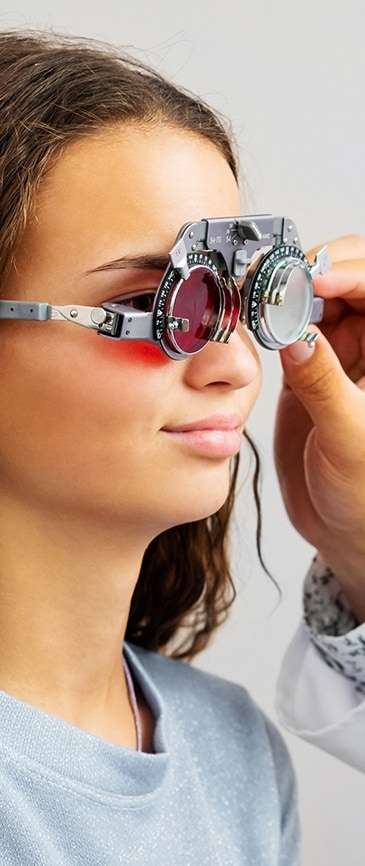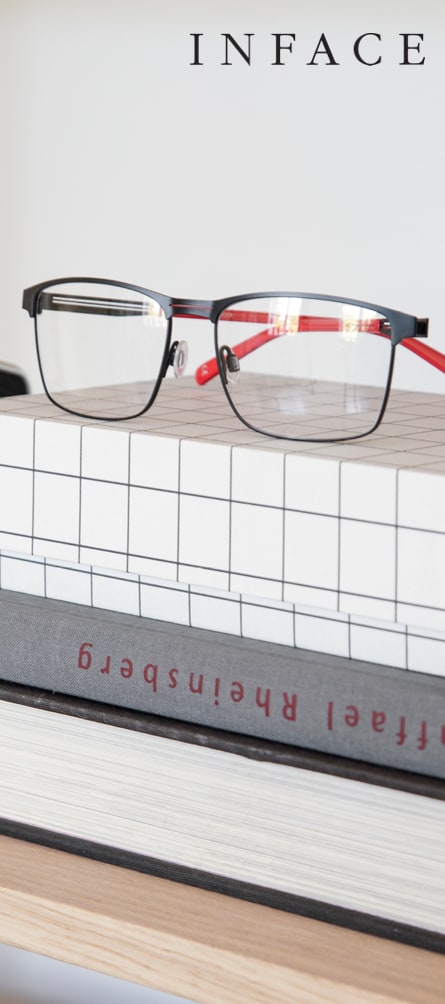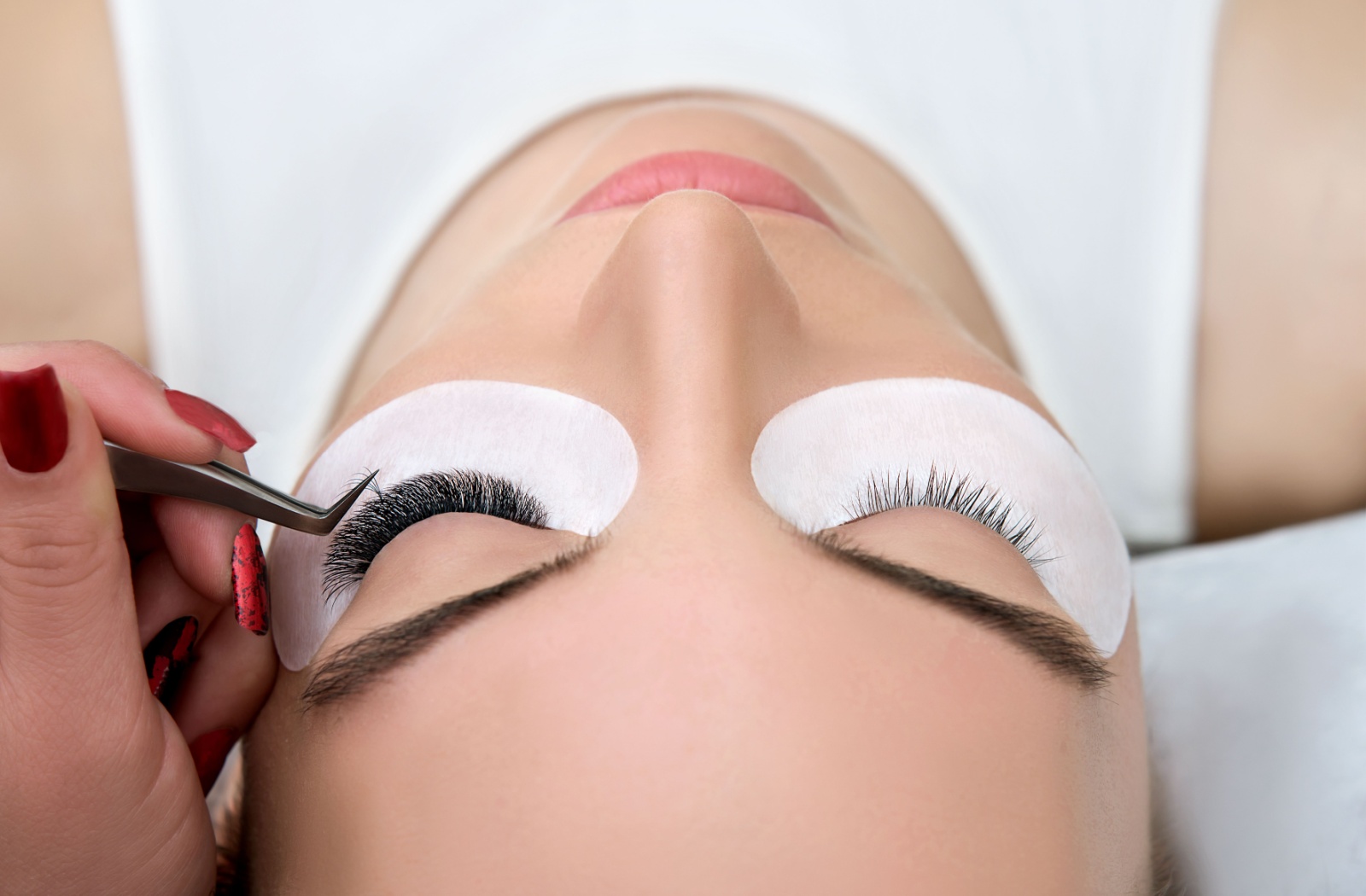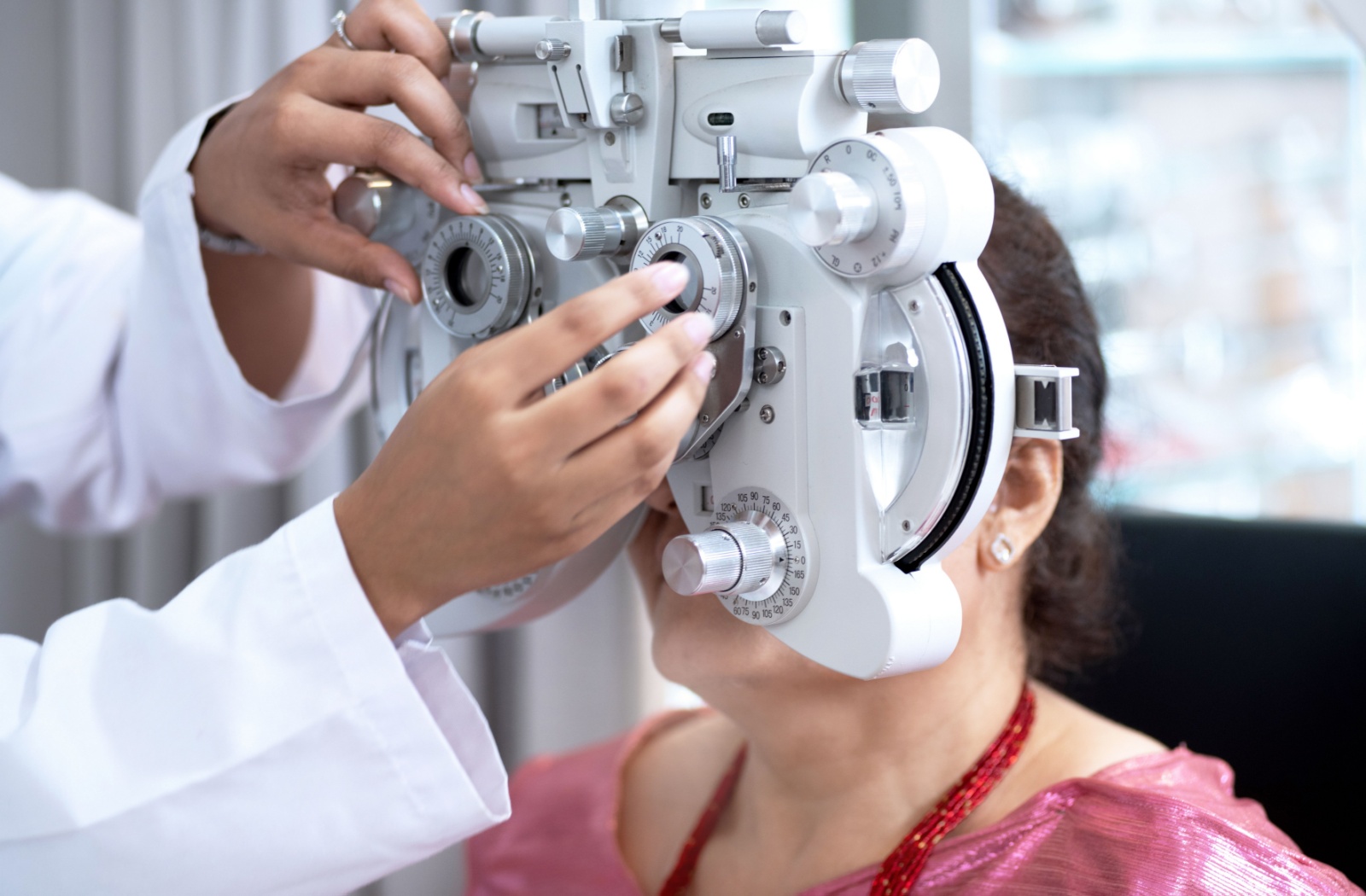Advancements in Eye Care
Advance Eye Care Center is at the forefront of new technology. Our optometrists keep themselves current and up-to-date with treatment options and equipment.
Our goal is to always advance. We advance our knowledge, our technology, and your experience.

Featured Technology
The Essilor Wave Analyzer Medica (WAM) 800 is a multi-instrument that combines many measurements and functions into one unit. This device assists with:
Technology for Myopia Control
The Topcon MYAH measures axial length, the elongation of the eyeball, to determine the progression of myopia. This device lets us personalize treatment recommendations depending on the speed of elongation and axial length changes
Technology for Comprehensive Eye Exams
We make use of technology so that your eye exams are anything but ordinary. Optos optomap imaging and Optical Coherence Tomography (OCT) are two of the pieces of equipment we use.
OCT is like an ultrasound, but with light instead of sound. It is a noninvasive imaging test that takes a cross-section picture of your retina. The machine scans your eye—but does not touch it. The purpose of the images produced by the scan is to examine the layers of your retina, in order to measure their thickness.
Images with OCT can be taken either with or without your eyes being dilated. Depending on the thickness of the retinal layers, we can determine your risk level for several eye diseases. Age-related macular degeneration and diabetic eye disease are just 2 of the issues we can observe using this technology.
Other conditions we may diagnose using OCT are macular holes, macular puckers, and vitreomacular traction.
The other eye exam imaging device we use is the optomap by Optos. This device takes ultra-widefield photos of your retina. Much like OCT, it is noninvasive and nothing ever touches your eye. More than 80% of your retina is captured in the images we take.
See this technology in action. Book an appointment today.
Technology for Contact Lenses
Contact lens exams involve some additional measurements, to make sure we get the right lenses for your unique eyes.
We use a keratometer to determine your corneal curvature. This measurement tells us what size your contact lenses should be.
Corneal topography lets us inspect the surface of your cornea. Remember the maps you looked at in geography class? It’s like that, but for your eyes. Corneas are normally smooth, but if corneal topography shows some deviation from that smoothness, it will impact the type of lens we recommend.
The Visioffice 2 from Essilor is a digital measurement device used to properly fit lenses of all types. It takes personalized visual behavioural measurements, helping us understand how your eyes move when you view the world around you.
Visioffice measures the way your eyes move across the lens and how you move your head when looking at objects. These measurements let us prescribe a lens that works with your eyes, rather than forcing your eyes to adapt to a lens. Behavioural measurements are especially important when we prescribe Varilux Xclusive lenses.
Technology for Eye Diseases
The technology we have invested in allows us to diagnose a variety of eye diseases and conditions, before they lead to loss of sight. The earlier we catch diseases, the better the patient outcome.
Age-Related Macular Degeneration
AdaptDx accurately and comfortably measures dark adaptation—how quickly the eye regains its sensitivity to the dark after exposure to bright lights.
This can detect the presence of AMD 2-4 years before clinical signs and before it can cause irreversible damage.
Glaucoma
Glaucoma often involves high intraocular pressure (IOP), so when we are testing for the condition, we look to your IOP to assess your risk.
Pachymetry measures your corneal thickness, which can have an impact on your IOP. We use this in combination with IOP tests to get an accurate representation of your eye health. For example, if your corneas are thin, you may have artificially low IOP readings, and if your corneas are thick, your IOP readings may be artificially high.
Non-contact tonometry is also known as the “air puff” test. This test measures how much air pressure is needed to flatten the corneas.
Cataracts
Using the Essilor Wave Analyzer Medica (WAM) 800, we can get a detailed look at the eye’s lens and determine its opacity. Hardened, opaque lenses indicate the presence of cataracts.
Technology for Trigeminal Dysphoria
To check for eye misalignment and the presence of Trigeminal Dysphoria, we use SightSync. The device can tell us if Neurolenses would benefit the patient.
See Our Technology in Action
We are a tech-forward practice, always investing in the newest innovations and keeping up to date on advancements in the field. Come and see our technology today.
OUR LOCATION
Visit Advance Eye Care Center in Regina, for all your eye care needs. We offer a number of services, including:
- Adult & Senior Eye Exams
- Children’s Eye Exams
- Diabetic Eye Exams
- Dry Eye Therapy
- Eye Disease Diagnosis & Management
- Trigeminal Dysphoria Treatment
- And more!
Interested in our services? Book an appointment below.
AECC Regina
- 3617B Pasqua Street
- Regina, SK S4S 6W8
Hours of Operation
- Monday: 8:00 AM – 5:00 PM
- Tuesday: 8:00 AM – 5:00 PM
- Wednesday: 8:00 AM – 5:00 PM
- Thursday: 8:00 AM – 8:00 PM
- Friday: 8:00 AM – 5:00 PM
- Saturday: 8:00 AM – 1:00 PM
- Sunday: Closed
*in July and August we are closed on Saturdays and open 8:00 AM – 5:00 PM on Thursdays
Our Brands



See Our Google Reviews
Our Blog
Blepharitis from Eyelash Extensions: Signs It’s Time to See Your Eye Doctor
Eye Care, Eye Conditions & TreatmentsEyelash extensions are a popular beauty trend, offering fuller, longer lashes without daily mascara application. But as stunning as they look, they can sometimes lead to an uncomfortable condition known as blepharitis. If you’ve noticed redness, irritation, or crusting around your eyelash line after getting extensions, despite proper care, it’s time to see your eye […]
Eye Exam Regina: What to Expect
Eye Exams, Eye HealthMaintaining healthy vision is a crucial part of overall well-being. Yet, eye exams are often overlooked until something feels wrong. Regular eye exams help detect early signs of vision issues and identify health conditions such as diabetes, glaucoma, and even hypertension. Some common tests you can expect during an eye exam in Regina include: There […]
Myopia Control Lenses: How They Work & Why They’re Effective for Slowing Nearsightedness
Children’s Eye Care, Contact Lenses, MyopiaMyopia, commonly known as nearsightedness, is one of the most widespread vision concerns among school-aged children. While glasses or contact lenses can provide clear vision, they don’t prevent the condition from worsening over time. That’s where myopia control lenses come in. Myopia control lenses work by correcting blurred vision while gently defocusing peripheral vision, which […]
Blepharitis from Eyelash Extensions: Signs It’s Time to See Your Eye Doctor

Eyelash extensions are a popular beauty trend, offering fuller, longer lashes without daily mascara application. But as stunning as they look, they can sometimes lead to an uncomfortable condition known as blepharitis. If you’ve noticed redness, irritation, or crusting around your eyelash line after getting extensions, despite proper care, it’s time to see your eye […]
Eye Exam Regina: What to Expect

Maintaining healthy vision is a crucial part of overall well-being. Yet, eye exams are often overlooked until something feels wrong. Regular eye exams help detect early signs of vision issues and identify health conditions such as diabetes, glaucoma, and even hypertension. Some common tests you can expect during an eye exam in Regina include: There […]
Myopia Control Lenses: How They Work & Why They’re Effective for Slowing Nearsightedness

Myopia, commonly known as nearsightedness, is one of the most widespread vision concerns among school-aged children. While glasses or contact lenses can provide clear vision, they don’t prevent the condition from worsening over time. That’s where myopia control lenses come in. Myopia control lenses work by correcting blurred vision while gently defocusing peripheral vision, which […]


